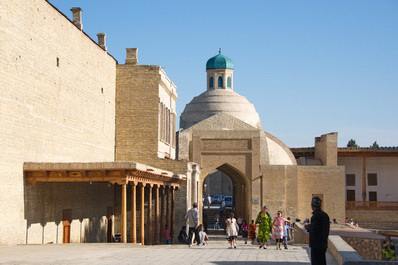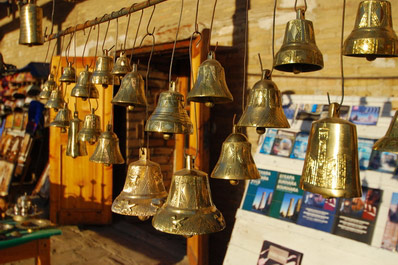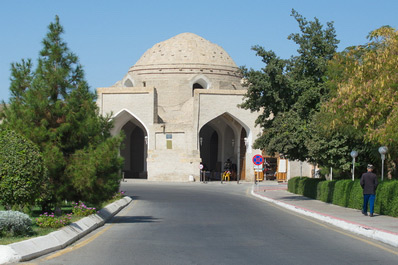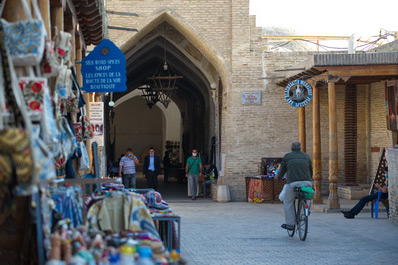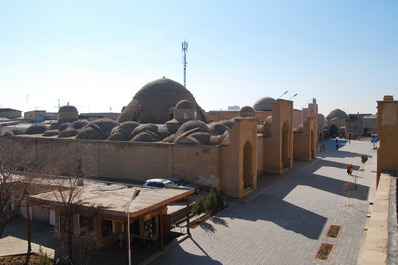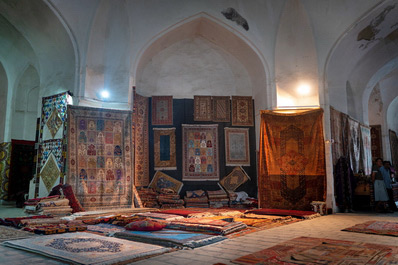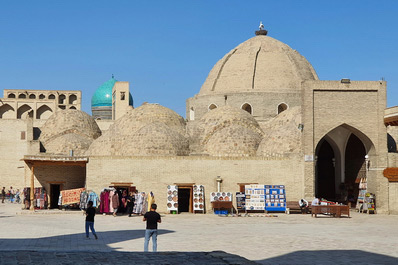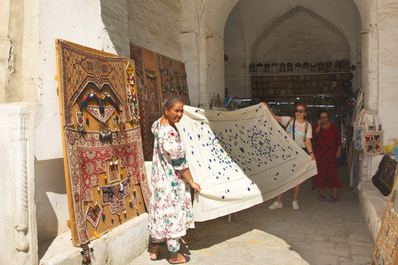Trading Domes of Bukhara
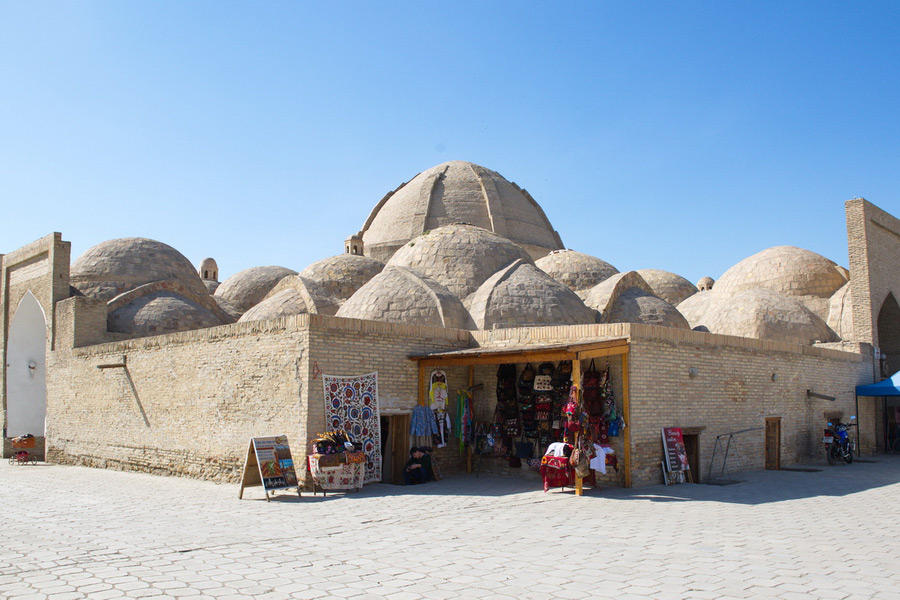
The trading domes of Bukhara are ancient structures where active trade in various goods has been conducted since the 16th century. Traditionally located at the crossroads of busy trade routes, Bukhara, a city long known for its bustling bazaars, once had six impressive passages. Today, four of these have survived, while the other two were destroyed in 1920 during the storming of Bukhara by the Red Army. The preserved Bukhara trading domes are still home to numerous shops where diligent vendors offer a myriad of exotic items, just as they did centuries ago.
These domes, known as “toki”, refer to covered galleries at the intersection of trade roads. You can visit several of these domes in the center of Bukhara, including Toki Sarrofon, Toki Telpak Furushon, Tim Abdullah Khan, and Toki Zargaron.
Toki Sarrofon was historically a place for trading everyday household goods like ceramics, copperware, carpets, robes, sandals, scarves, as well as silk, cotton, and woolen fabrics. You could also find trays, bowls, jewelry, and religious amulets here.
Toki Sarrofon was also known as a currency exchange hub. The term “sarrof” means “changer” in Persian and Tajik. Money changers in this dome earned a living by converting currencies from different countries, such as the Ottoman and Russian empires, China and India, Afghanistan, and Arabia. These changers played a vital role in Bukhara’s social and economic life from the 16th to the 19th centuries. Beyond exchanging money, they provided credit services, lending to overseas merchants and local residents, which fostered trade and strengthened the city's economy. By interacting with merchants from around the world, they also gained access to valuable information about events, cultural phenomena, traditions, and advancements of their time, promoting knowledge sharing, development, and enlightenment.
Today, Toki Sarrofon is an attraction in Bukhara's historical center. Inside the trading dome, you’ll find souvenir shops selling jewelry, ancient coins, handmade carpets, carved woodwork, paintings by local artists, and traditional Uzbek costumes.
Toki Telpak Furushon was known throughout Bukhara as the go-to spot for headwear. The telpak, a traditional headdress made of sheep's wool, has a high domed shape to keep warmth. At Toki Telpak Furushon, you could also find skullcaps worn by both men and women, turbans, papakhas, hats, caps, and other types of headwear. Back in the day, this dome was also famous for book trading and was called Toki Kitob Furushon, from the Uzbek word “kitob”, meaning “book.” Nowadays, inside the dome, you can buy painted dishes, statuettes, vases, musical instruments, clothes, and accessories.
Tim Abdullah Khan is a multi-domed center of commerce, built as a separate structure. Its standout architectural feature is the additional convex vaults alongside the main central dome. Under the main dome, there's a spacious trading area, with rows of 56 galleries along the perimeter for various goods. Historically, silk fabrics and patterned carpets were traded here. Today, you can still find luxurious palaces, suzanes, and tapestries adorned with colorful ornaments and pictures. The interior remains cool and fresh due to the clever distribution of airflows and minimal window openings. Light only enters through small openings in the central dome's drum, keeping the sun’s heat at bay.
Toki Zargaron is the largest of all the Bukhara trading domes, known for selling jewelry. Beneath its massive arches, workshops crafted jewelry from precious stones and metals. It was also where the coins of the Bukhara Khanate, known as Bukhara tanga, were minted. From the 16th to the early 20th century, these coins were made of silver, making Toki Zargaron a place where money literally flowed. Today, you can buy folk crafts, carpets, Uzbek musical instruments, costume jewelry, rare antiques, and much more. All four of these trading domes were built in the 16th century during the reign of the powerful Sheibanid Khan dynasty, which created one of the most developed and economically strong states in Central Asia, the Bukhara Khanate. The trading domes of Bukhara, symbols of power and growth, still rise above the historical center of the ancient city, reminding travelers of the East's untold riches.


